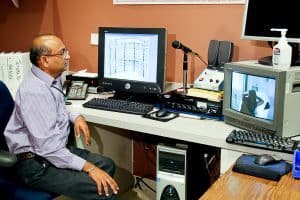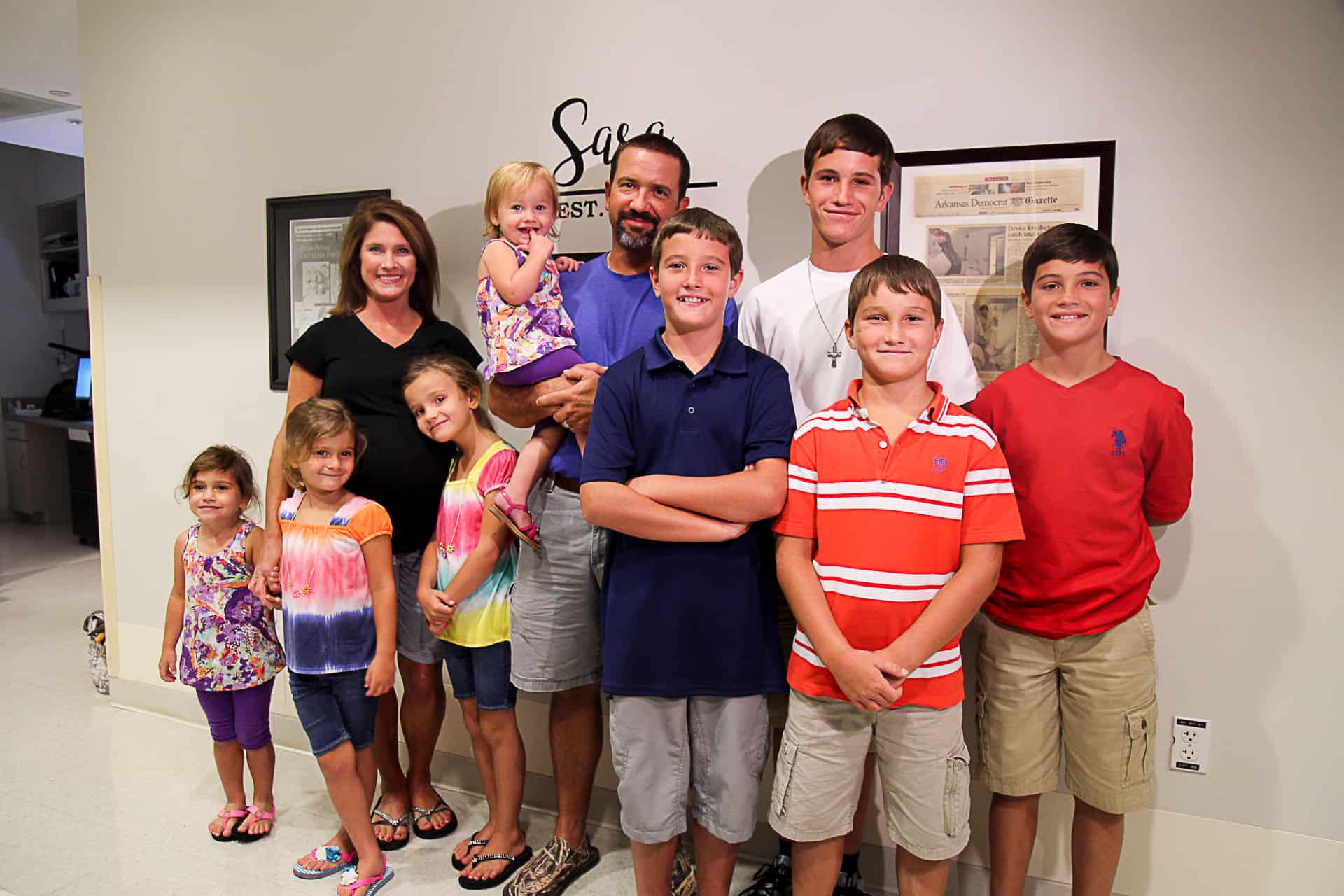Nine Siblings Contribute to Fetal Development Research
| Sept. 1, 2016 | While Asa Kearby was still in the womb he was contributing to scientific understanding of fetal development – just like his eight brothers and sisters before him.

Baby Asa was born Aug. 23 at UAMS. He is the ninth sibling in the Kearby family to participate in prenatal research through the university’s SARA Lab.
Asa and his mom, Amanda Kearby, recently participated in a study through the Department of Obstetrics and Gynecology in the UAMS College of Medicine. Researchers measured Asa’s brain activity using the Superconducting Quantum Interference Device (SQUID) Array for Reproductive Assessment (SARA).
Kearby, a nurse and lactation consultant at Arkansas Children’s Hospital, said she participated in the research with her first baby because she wanted to make a difference.
“I knew it was noninvasive research, safe research, and being a nurse, I always try to participate in things that will be beneficial, especially long-term research goals,” she said.
The first baby to participate in the study, Will, is now 14 years old. Her other children are Matt, 12; Jack, 11; Ben, 9; MaryKate, 6; Ruby, 4; AnnaBelle, 3; and Noelle, 19 months.

Hari Eswaran, Ph.D., professor and SARA scientific director in the Department of Obstetrics and Gynecology, oversees the research aspects of the SARA projects. Here he watches readings come in from Amanda Kearby, right, in monitor, while she is inside the SARA structure.
Asa, who was born Aug. 23, and his mother were controls in a study into fetal brain development. Other studies since the SARA research began at UAMS in 1998 have looked at fetal heartbeats and the uterus.
Curtis Lowery, M.D., chairman of the Department of Obstetrics and Gynecology and principal investigator on the SARA research, explained how the device works. The mother sits against the SARA scanner, which covers her abdomen. There are 151 SQUID sensors inside the device that can detect fluctuations in magnetic fields, producing 3-D data about the fetus and uterus.
“So we get information from the fetus and uterus that we couldn’t get otherwise without this device,” Lowery said.
The technology has long been used to scan the brains of adults, but UAMS was the first medical center to use the technology in maternal-fetal research.
While Lowery oversees the clinical aspects of the studies, Hari Eswaran, Ph.D., professor and SARA scientific director in the Department of Obstetrics and Gynecology, oversees the research. The first several years of the study were spent establishing control groups, then they began to study high-risk pregnancies to contrast them with the control groups. The result was the first of its kind in the exploration of maternal-fetal disease.
“One of the most satisfying things is being able to have a completely non-invasive device, which is able to get us a wealth of information about the growing fetus,” Eswaran said.

Curtis Lowery, M.D., is chairman of the Department of Obstetrics and Gynecology and principal investigator on the SARA research.
They discovered that in pregnancies with complications, the fetus’s brain activity looks different than in a regular pregnancy. They have also shown that uterine contractions synchronize with electrical activity right before labor. The combined effect is the signal for labor to begin. They hope this information can be used in interventions for pre-term labor.
In addition to the science, Kearby said her family has developed a relationship with the staff. During one of Kearby’s last visits, Heather Moody, R.N., performed an ultrasound on Kearby with the whole family in the room – some of the children sitting in the laps of other children to make room.
Moody pointed to Asa’s eyes, nose and mouth on the ultrasound screen.
“Do you see that, Ruby? You see it?”
“Yes,” Ruby replied slowly, in a deliberately polite voice learned for talking to adults.
Later there were hugs and the kids hurried to the part of the lab where they knew there is a candy jar. Kearby said it seemed natural to add Asa to this experience.
“With this baby I decided to do the SARA study because I had done it with all of my other babies and by this time I’ve formed kind of a relationship with the staff. I just thought it would be a neat way to continue the tradition and study,” Kearby said, encouraging others to participate as well. “It was an easy way to help.”
Services are available through the University Women’s Health Center.
